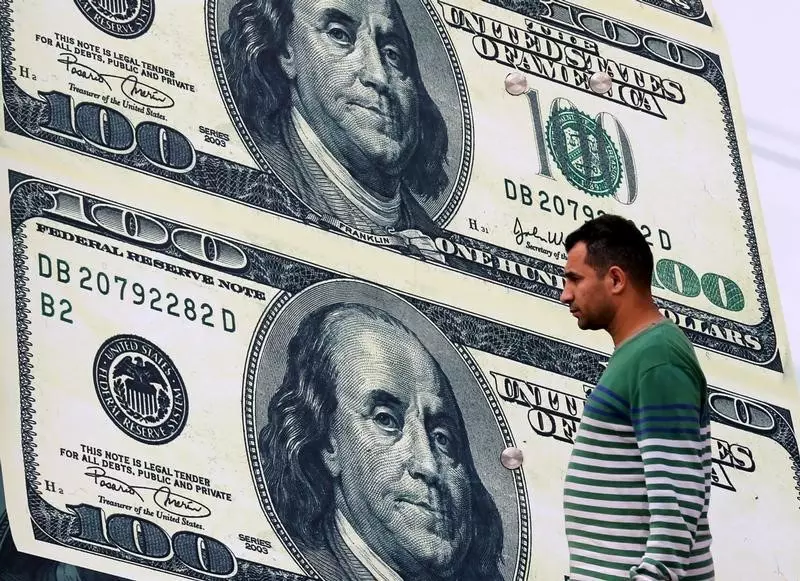The U.S. dollar showed some signs of strength on Friday, ending a five-week losing streak as investors awaited the release of key inflation data. The Dollar Index, which measures the greenback against a basket of major currencies, edged 0.1% higher to 101.314 at 04:00 ET (09:00 GMT). This slight uptick came after the dollar reached its highest level since late August at 101.58 on Thursday. Despite its recent gains, the dollar is still on track for a monthly drop of around 2.5% in August, marking its worst performance since November. The Federal Reserve’s impending rate-cutting cycle has been a key factor behind this decline, with Fed Chair Jerome Powell signaling a shift in policy stance at the recent Jackson Hole symposium.
In Europe, the euro struggled against the dollar, with EUR/USD trading 0.1% higher at 1.1092. The release of eurozone consumer inflation data for August painted a worrying picture, as CPI rose 2.2% on an annual basis, down from 2.6% in the previous month. This downward trend in inflation has prompted the European Central Bank to consider further interest rate cuts in the near future, with June already seeing a decrease in rates. The outlook for the euro remains uncertain as policymakers weigh the impact of slowing inflation on the region’s economic growth.
Pound Sterling Strengthens on Bank of England’s Policy Outlook
GBP/USD saw a modest gain, rising 0.2% to 1.3188, approaching its highest level since March 2022. The strength in the British pound can be attributed to market expectations that the Bank of England will maintain higher interest rates compared to other major central banks. The BoE initiated a 25 basis point rate cut in early August, bringing rates down to 0.5%. However, with further cuts priced in by the end of the year, the pound’s rally may face headwinds as economic uncertainties persist.
In Asia, USD/JPY remained steady at 145.01, hovering near its early August lows. The recent release of consumer price index data from Tokyo showed a slight uptick in inflation for August, a positive sign for the Bank of Japan’s efforts to achieve its 2% target. Despite encouraging inflation figures, concerns remain around disappointing industrial production and retail sales data. Meanwhile, USD/CNY traded lower at 7.0907, hitting its lowest level since late December. The Chinese yuan received a boost from Beijing’s plans to refinance $5.4 trillion of mortgages, aimed at revitalizing the property market and supporting economic growth in the face of global headwinds.
Currency markets are closely monitoring key economic indicators to gauge the future direction of major currencies. While the U.S. dollar has shown resilience in the face of rate cut expectations, the euro and pound face pressures from subdued inflation and policy uncertainties. Asian currencies, particularly the Japanese yen and Chinese yuan, are responding to domestic economic developments amid ongoing trade tensions. As central banks navigate through challenging macroeconomic conditions, investors remain vigilant for any shifts in monetary policy that could impact currency valuations in the coming months.

